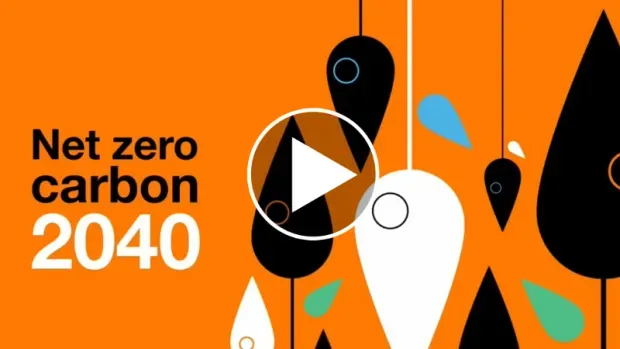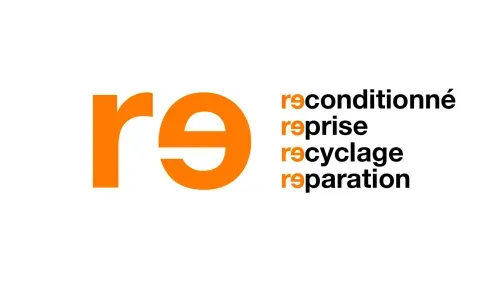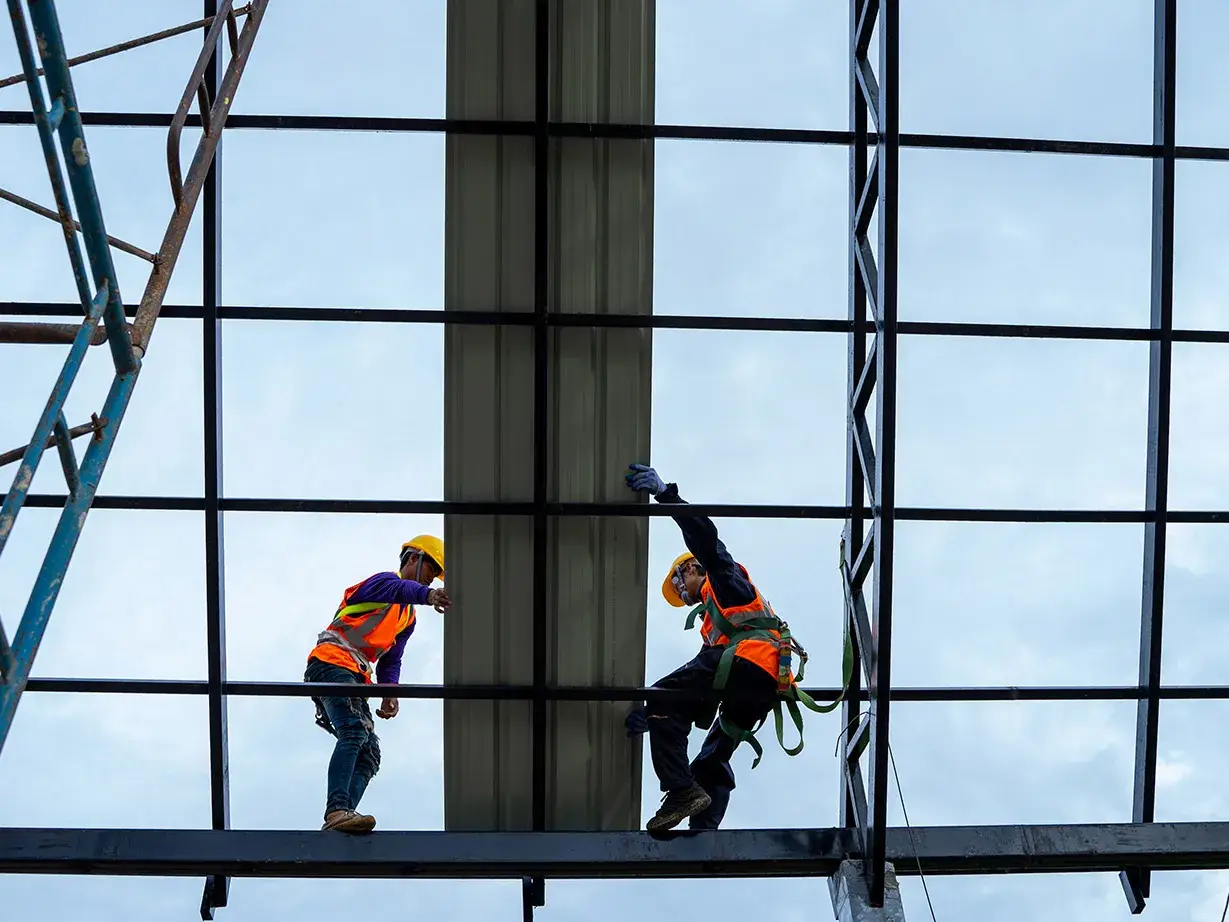As a leading operator, Orange aims to build a more responsible digital world by committing to net zero carbon emissions by 2040. This translates into considerable efforts to reduce our direct and indirect CO2eq emissions, whether via energy efficiency, renewable energy, the circular economy, or reducing carbon through our value chain and carbon capture. It also translates into financing carbon sink projects to capture our residual emissions. This voluntary roadmap includes initial milestones to be achieved by 2025.
Fighting climate change by reducing our greenhouse gas emissions
We are committed to reducing our scopes 1, 2 and 3 CO2eq emissions to become net zero carbon by 2040. Our first target is to reduce emissions on scopes 1 and 2 by -30% by 2025 compared to our 2015 emissions and -14% on scope 3 emissions compared to our 2018 emissions. We’re targeting a second milestone of a -45% reduction in our emissions across all scopes by 2030 compared to 2020.
This commitment enables Orange to play its part in the global effort defined by the Paris Agreement at COP 21 on 12 December 2015.
The overarching goal is to keep “the increase in global average temperature well below 2°C above pre-industrial levels” and to pursue efforts “to limit the temperature increase to 1.5°C above pre-industrial levels."
World leaders have stressed the need to limit global warming to 1.5°C by the end of this century.
This is why we’re committed to reducing our CO2eq emissions by 90% by 2040 and to offsetting the remaining 10% through sequestration into natural carbon sinks.
The Group’s proactive policy has been recognized by the Sustainable Markets Initiative’s 2023 Terra Carta Seal, which rewards global companies which are actively leading the charge to create a climate and nature-positive future.
Net zero carbon by 2040
a global commitment
We’re committed to two pillars:
- 1 Reducing our CO2eq emissions by 90%. This could be either directly linked to our own fossil fuel consumption or indirectly linked to our electricity consumption or our value chain, whether generated by our suppliers or by our customers using our products.
- 2 Offsetting the remaining 10% by sequestering carbon in natural sinks with projects to restore natural areas.
Our commitments corresponding to scopes 1, 2 and 3 of our Greenhouse Gas Protocol have been validated by the SBTi (Science Based Targets initiative), an international scientific benchmark for assessing climate targets. Our near-term (2030) and long-term (2040) targets have been approved.
Proactively consuming less energy and decarbonizing electricity
Our Green ITN program saved 1,358 GWh of electricity and 127 million liters of fuel oil in 2024. Over the 2015–2024 period, cumulative savings reached more than 6.6 TWh of electricity and 550 million liters of fuel oil, thereby avoiding the emission of at least 4.26 million tonnes of greenhouse gases (GHG).
We’re deploying new eco-efficient equipment and gradually replacing our old network and IT infrastructure. This is the case with our two latest data centers in France, which consume on average 30% less energy than our previous centers while providing equivalent capacity, meaning we can replace a further 10 data centers throughout the region. These data centers employ “free cooling”, a technology that reduces the use of artificial air conditioning by 80%. We’re continuing to improve these figures by co-innovating with various industrial and academic partners in our labs.
How Orange Energies makes clean and affordable electricity more accessible in Africa
We are continuing to implement action plans aimed at increasing the share of electrified vehicles in our fleet, reducing business travel, and promoting collaborative and socially responsible modes of transportation. In France, Orange currently operates more than 2,400 electric vehicles and 826 electrified vehicles, meaning that 22% of the fleet is electric or electrified. The company also provides access to 2,150 charging stations at Orange sites, as well as 140,000 public charging stations. In addition, Orange is very active in testing the viability of electric maintenance vehicles (battery or green hydrogen fuel cells). In April 2023, Orange received its first utility vehicle powered by hydrogen – the first such mass-produced model delivered to a company in France.
The Group’s ambition is to have 7,000 electrified vehicles by 2025. Moreover, the size of the fleet in France has been steadily decreasing—by about 5% per year on average since 2015—reaching 14,664 vehicles by the end of 2024, with the goal of reducing it by more than a thousand additional vehicles by 2025.
Working with suppliers and customers to reduce indirect emissions
In terms of environmental impact, scope 3 emissions are five times greater than scopes 1 and 2 emissions.
82% of scope 3 emissions come from what we buy so reducing our carbon therefore requires joint actions with our suppliers (equipment manufacturers, transport companies, etc.). We follow strict manufacturing and logistics processes, we’re mindful of how we design and develop our products and services, and we control the way we buy things both in terms of volume of goods and the carbon footprint associated with them.
Deploying the circular economy
The circular economy also helps us reduce our carbon emissions, contributing 20% to 30% to our target to reduce scope 3 emissions by 2030. Indeed, increasing the lifespan of products is just one of the ways we promote all aspects of the circular economy.
In our core businesses (networks, data centers…), we’re extending the lifespan of devices and increasing our use of refurbished equipment..
In 2021, for example, we launched OSCAR, an internal marketplace to reuse existing equipment in our infrastructure. In addition, through network sharing in Spain and Belgium, we are working to redeploy any dismantled equipment to the countries where we are developing new networks, reducing the amount of new equipment that must be manufactured and extending the useful life of our reconditioned equipment.
From 2025, we are committed to ensuring that 100% of our Orange branded products follow an eco-design approach. Among the pilot projects is the Livebox 7, which has received the Footprint Progress certification by Bureau Veritas, another example of making greener products.
Understanding the circular economy approach
The main purpose of the circular economy is to limit resource consumption and produce more longer-lasting goods and services.
By limiting the consumption and therefore waste of natural resources, the circular economy breaks with the traditional practices of the linear economy (extract, manufacture, consume, throw away). It optimizes the use of goods and services rather than their possession (functional economy).
Our ambition also relates to the collection of used digital devices.
By 2025, we aim to collect the equivalent of 30% of our mobile phone sales volumes in Europe and 20% in MEA by 2025. The challenge is considerable because 80% of the environmental impact of a smartphone is linked to its manufacturing and end-of-life phases. During 2024, the mobile collection rate across the Group’s eight European countries was 29 %, taking into account workshops operating in African countries funded by France.
In addition to the regulatory obligation to provide a standard warranty service, we’re committed to developing an “attractive” repair offer in our European countries to help extend the lifespan of mobile devices outside their warranty period.
Since 2010, Orange has partnered with the social cooperative organization Ateliers du bocage to open mobile waste collection workshops in three African countries (Burkina Faso, Cameroon and Côte d'Ivoire). These workshops have now dealt with more than 2 million mobile phones while creating job opportunities in the area.
Investing in carbon sequestration
By 2040, we aim to reduce our CO2 emissions by 90% (compared to 2020) by acting on scopes 1, 2 and 3 of the Greenhouse Gas Protocol. To achieve our net zero carbon target, we will also reduce our 10% residual emissions by investing in carbon sequestration initiatives.
Understanding carbon sequestration
Carbon sequestration is a process that captures the CO2 present in the atmosphere and stores it in natural “carbon sinks” (oceans, forests, biomass, soil, etc.) through physical and biological processes such as photosynthesis – sometimes over the long term. All these carbon sequestration solutions help reduce the amount of CO2 present in the atmosphere and fight against global warming.
Implementing carbon sequestration programs
Rather than just purchasing carbon certificates, Orange has voluntarily chosen to invest in natural carbon sink projects, such as reforestation, agroforestry, and mangrove restoration. Given the project selection phase and the time taken for these forests to grow, the first carbon credits are expected around 2025-2026.
Orange uses the following criteria to select sequestration projects:
- Projects must permanently sequester atmospheric carbon to store in organic matter
- Financing must fund reforestation projects that provide additional carbon sequestration rather than protecting existing forests
- Projects must include certification and registration with international standards such as Verra or Gold Standard
- Projects must positively impact local populations (social and economic inclusion) and increase biodiversity, in line with two further Group commitments.
Orange Nature enables us to add a new dimension to the carbon sequestration projects that we have been supporting for several years by boosting socio-economic development and preserving local biodiversity through carbon sink projects in Europe and MEA. Examples include joining the Livelihoods Carbon Fund 3 and co-launching a single-investor fund in partnership with Mirova, both in 2021.
In November 2022, we joined forces with Sia Partners to support Planète Urgence, a large-scale project to restore and sustainably manage almost 1,000 hectares of mangroves in Cameroon. This “CAMERR” project involves local partners, experts, communities, local and national authorities and serves to protect Cameroon’s vulnerable mangroves. Not only will this preserve biodiversity and reduce atmospheric carbon, but it will also have a social impact in terms of helping local communities and income generation.
It will take a collective effort for our initiatives to pay off
While energy consumption associated with digital technology is increasing due in part to the exponential increase in its use across all sectors (industry, cities, transport, buildings, etc.), we are also raising awareness of how we can all do our bit to limit unnecessary screen time and build a more responsible digital world.
Changing a few digital habits can lead to significant impacts. Here are a few simple, essential, and useful ways to save electricity and other vital resources such as raw materials, land, and water. We’re all responsible for our future planet so let’s adopt them.











